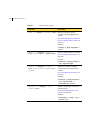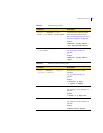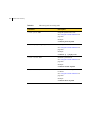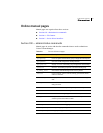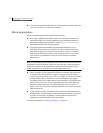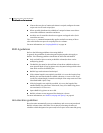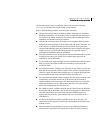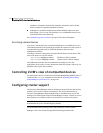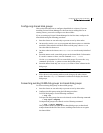
512 Configuring Veritas Volume Manager
Adding unsupported disk arrays as JBODs
Optional Setup Tasks
■ Place the root disk under VxVM control and mirror it to create an alternate
boot disk.
■ Designate hot-relocation spare disks in each disk group.
■ Add mirrors to volumes.
■ Configure DRL and FastResync on volumes.
Maintenance Tasks
■ Resize volumes and file systems.
■ Add more disks, create new disk groups, and create new volumes.
■ Create and maintain snapshots.
Adding unsupported disk arrays as JBODs
After installation, add any disk arrays that are unsupported by Symantec to the
DISKS (JBOD) category as described in “Administering the Device Discovery
Layer” on page 85.
Adding foreign devices
The device discovery feature of VxVM can discover some devices that are
controlled by third-party drivers, such as for EMC PowerPath. For these devices
it may be preferable to use the multipathing capability that is provided by the
third-party drivers rather than using the Dynamic Multipathing (DMP) feature.
Provided that a suitable array support library is available, DMP can co-exist with
such drivers. Other foreign devices, for which a compatible ASL does not exist,
can be made available to Veritas Volume Manager as simple disks by using the
vxddladm addforeign command. This also has the effect of bypassing DMP.
Refer to “Administering the Device Discovery Layer” on page 85 for more
information.
Adding disks to disk groups
To place disks in disk groups, use VEA or the vxdiskadm program after
completing the installation. Refer to “Adding a disk to VxVM” on page 97 and
the VEA online help for information on how to add your disks to new disk
groups.
See the Veritas Storage Foundation Intelligent Storage Provisioning
Administrator’s Guide for information about creating storage pools within disk



